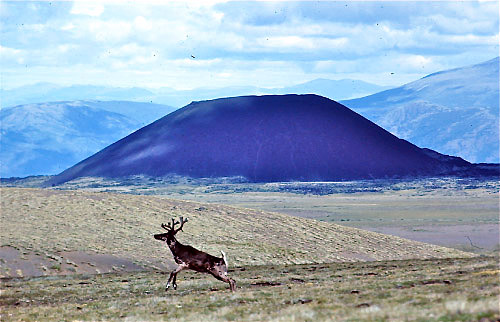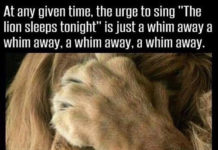

Rumour has it that a low-flying team of reindeer will soon eclipse the moon over Revelstoke. Have you ever wondered how our myth of Santa’s sleigh got started? It’s a curious mixture of fact and flight of fancy to which we add three French hens, two turtle doves, and the North American wild turkey. Humans have a peculiar desire to combine the outdoors with religious ceremony. After all, what have reindeer to do with Christ’s Mass? About as much as the Easter Bunny has to do with his Crucifixion.
Santa Claus the myth originated as a tradition in Holland—and there were certainly never reindeer in that country. However, there are plenty in northern climes, particularly in Asia, Russia, Scandinavia, Greenland, and Canada. There are reindeer in B.C. too, only here we call them caribou. They are the same species as the circumpolar animals, but the name reindeer is usually applied only to domesticated species such as those herded by Laplanders. Reindeer are now being ranched in Alaska and the Northwest Territories, but until the 1985 release of Santa Claus, the Movie, no one had ever taught them to pull a sleigh, let alone fly.
Like Santa’s team, B.C.’s woodland caribou are members of the deer family, and travel in small groups. They seek the seclusion of mature coniferous forests or remote alpine meadows, including Glacier and Mount Revelstoke National Parks. At one time caribou were abundant in this province; the Cariboo region refers to their once-widespread presence in that part of the province. Alas, they are now seen as infrequently as Rudolph and Cupid.
Any illustration I’ve ever seen of Mr. Claus’s caribou has shown them all with antlers. That’s accurate. Unlike all other members of the deer family, female ‘bou carry racks, though these are smaller and less branched than those of the bulls. Large antler size indicates a dominant bull, but by Christmas each year, most of the males have shed their crowning glory. Pregnant cows however, carry theirs until they calf in April. Antlers mark her as socially dominant during the difficult winter period. Consequently she can pull rank for the best feeding sites and obtain vital nutrition for her developing fetus.
I would be curious to know what Santa feeds his herd. In winter, woodland caribou feed heavily on lichens hanging from the branches of spruce and fir. These plants are called “old man’s beard”, so Santa may be at some risk with those chin-whiskers. In alpine regions, caribou feed on ground-growing reindeer lichen. This is the same stuff used to make trees on architectural models and by the Revelstoke Model Railroad Society.
Because lichens are so slow to mature, the tree-growing species require mature forests to become abundant. This dependence has caused a severe decline of B.C.’s caribou population, particularly in the Kootenay region. Logging, recreational developments, reservoir flooding, and forest fires have severely damaged their former range. Concentrated on this reduced habitat, the shrunken herds are badly exposed to poachers and predators. Fewer than 150 animals remain in the central Selkirk Mountains, and they are at risk of extirpation (localized extinction). They, and conservation groups fighting to save them, need your attention beyond this Christmas season. The Revelstoke Current covered some of this activity last September. Read here: https://legacy.revelstokecurrent.com//2012/09/25/buying-time-for-our-mountain-caribou-one-cow-and-calf-at-a-time/
On December 24, as I listen for the clatter of hooves on my roof, I will recall the first caribou I ever saw in the wild. Sadly, it wasn’t at Revelstoke. It was in B.C.’s northern wilderness, Mount Edziza Provincial Park. The young bull, typically curious, would rear up on his hind legs before trotting off a short distance, then stop to look back over his shoulder. He did this several times, as though inviting me to gambol after him. I wonder whether it might have been Prancer on vacation?
Tom Parkin is an RSS grad of 1969, and writes for The Revelstoke Current on the last Saturday of each month.



